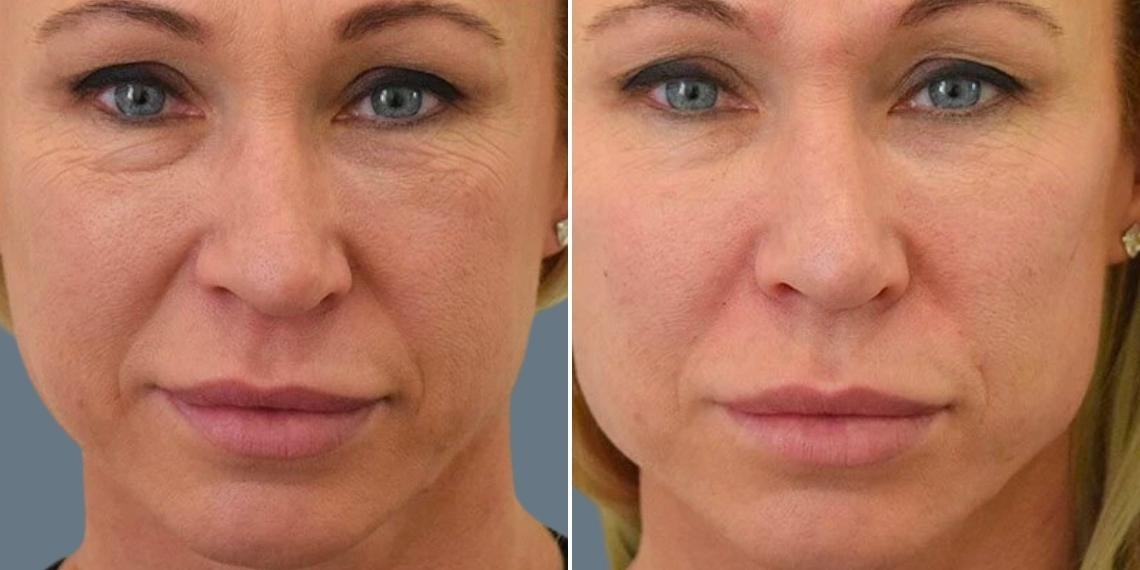- Liposuction
- Buttocks
- Breasts
- Facial Rejuvenation
- Face & Neck
SEE ALLVolume Enhancement Before & After
CLOSE*Results may vary from patient to patient. **All ‘after’ images are taken 2-6 weeks post treatment.Volume Enhancement Treatments
Volume enhancement treatments are a non-surgical option aimed at enhancing facial features for a refreshed appearance. At Cosmos Aesthetics, we use volume enhancers to enhance facial features, replace lost volume, and restore facial symmetry, with visible results.Comprehensive care. Highly trained and qualified teamConvenient locations. Multiple clinics to choose fromEnquire about this treatment
Prefer to talk? Call 1300 138 797THE RESULTS
What are volume enhancers?
PRICE SPECIAL!
In these tough times, we’ll save you shopping around!
For your first appointment only, we’ll beat any treatment price on offer by 10%!
Terms and Conditions apply.
Terms and Conditions:
Offer only redeemable at the Double Bay and Cronulla clinics for new patients and by showing proof of other treatment price on offer.
Consult fee of $120 may apply, which will be taken off the price of treatment.
This offer may be withdrawn at any time.
This offer cannot be used in conjunction with any other offer.
This offer cannot be applied to package prices.
For legal reasons, product names cannot be used in advertising. Please contact our clinic for further information.
Volume Enhancer Information
Volume enhancers are composed of a natural complex sugar called hyaluronic acid, which is found naturally in your body. Over time you’ll have a gradual loss of hyaluronic acid due to the natural ageing process. This results in volume loss in your face, making you appear older than you feel. Volume enhancement treatments are used to restore this lost volume while rejuvenating and reshaping your face. Used with wrinkle relaxers, volume enhancers are also a preventative anti-ageing treatment. Volume enhancers can be used to treat acne scars and the following areas of your face:
- Tear troughs
- Marionette lines
- Temples
- Lips
- Nasolabial folds
- Cheeks
- Nose
- Forehead
- Chin
- Jawline
The volume enhancers we use at Cosmos Aesthetics are a smooth injectable gel composed of a temporary-filler-solution. When this is injected below your skin’s surface, they plump up areas like your lips, fill in wrinkles and add volume to your cheeks. Lasting up to 2 years, volume enhancers give you the opportunity to enhance your appearance, without having surgery.
This treatment is available at Cosmos Aesthetics in Sydney, Canberra, Adelaide, & Gold Coast
*Results may vary from patient to patient.
**All photos are of patients from Cosmos Aesthetics, and all ‘after’ images are taken 2-6 weeks post treatment.
THE PROCEDURE
What happens during a volume enhancement treatment?
Before your volume enhancement treatment, our medical professional injectors will thoroughly cleanse your face before applying ice to numb the treatment area. The volume enhancers we use at Cosmos Aesthetics have a local anaesthetic in them which minimises discomfort during the procedure. Immediately after your volume enhancement treatment, they will apply pressure to the treatment area with gauze.
You may experience some swelling, redness and bruising but this will usually resolve itself within 48 hours. Volume enhancement treatment area include:
- Lips
- Chin
- Cheeks
- Corners of your mouth
- Smile lines
- Hollows under your eyes (tear troughs)
- Wrinkles and lines on your face
- Backs of your hands
You can have multiple areas of your face treated in the one procedure during this non-surgical treatment. We can also use volume enhancers to treat depressed acne scars and to reshape your nose.
What brands of volume enhancer do you use?
In Australia it’s against the law to state which volume enhancement brands we use. Classified as prescription medicine, only doctors can prescribe volume enhancers. This is why you must have a consultation to ensure volume enhancers are appropriate for your face.
At Cosmos Aesthetics, we use high quality volume enhancers. We have five different types of preparations, allowing for effective treatments on different areas of the face. Volume enhancers are composed of a naturally occurring substance in the body that is also soluble. This means that should too many mL’s of volume enhancers are used, or you don’t like the results, they can be dissolved using hyaluronidase and the treatment area can be corrected with ease.
The volume enhancers we use have a built-in local anaesthetic allowing for a quicker, more comfortable treatment with less swelling. At Cosmos Aesthetics, all medical professional injectors are fully trained and qualified in injecting volume enhancers.
How much is a volume enhancement treatment?
At your initial consultation, your treating medical professional will discuss what outcomes you’d like from the volume enhancement treatment. This consultation is between $120 and $200, redeemable upon treatment. They’ll then determine the areas and extent of treatment with you. Cosmos Aesthetics prices start at $350 with discounts offered for additional mL’s of volume enhancement. For more pricing details, please visit our pricing page.
FROM
$350.
Locations available

OUR EXPERIENCE
How to choose a volume enhancement clinician
With so many clinics providing volume enhancement treatments, it can be hard to figure out who to choose. At Cosmos Aesthetics, all our medical professional injectors are specially trained in performing injectable treatments. One medical professional has been appointed as an Allergan National Trainer (a prestigious title held by less than 20 doctors nationwide).
We treat many interstate and overseas patients each year at Cosmos Aesthetics and have special procedures in place for those travelling to our clinics for treatment. For travelling patients, please send us images of the areas you wish to have treated, which Cosmos Aesthetics location you’d like treatment at, and where you’re located in the description. Our staff can then include all the appropriate information including pricing for travelling patients as part of your personalised quote.
To help you decide which clinic to have volume enhancement treatments at we suggest you:
- Choose a reputable clinic with a good track record of results: A clinic should always have a website and a professional social media, along with the names of the injectable nurses and any doctors responsible for volume enhancement treatments. Before and after photos of the injectors work, and results achieved should also be included to view. In Australia you are able to cross check the names of doctors and nurses on the Australian Health Practitioner Regulation Agency (AHPRA) register to ensure they are qualified and registered.
- Experience: We recommend you choose an injecting clinic with many years of experience, and an injector who you feel comfortable and supported by. At Cosmos Aesthetics, our team of specialist registered nurse cosmetic injectors and doctors are highly trained, talented, and passionate about delivering beautiful volume enhancement results.
- Before and after photos and videos: Clinics with a good reputation will include numerous before and after photos of actual patients. When you assess these photos, you should be checking to see if the results are similar to your cosmetic goals. Browsing through social media posts will also give you insights into the actual results the clinic achieves.
50 years
of collective experience and the latest medical equipment
10+ years
of experience performing Vaser Liposuction
30,000
surgical procedures since 2007
How do volume enhancers work?
Volume enhancers can rejuvenate and reshape your face without having to undergo surgery. The volume enhancers we use at Cosmos Aesthetics have an active ingredient called hyaluronic acid. As you get older, the natural hyaluronic acid decreases resulting in a loss of volume in your face which can make you look older than you feel. After a volume restoration treatment, your skin’s supply of hyaluronic acid is boosted resulting in:
- Less facial lines and wrinkles
- Fuller lips and cheeks
- Less droopy skin
- A rejuvenated and fresher looking face.
Volume enhancers, also known volume restoring treatments, are a non-surgical method that some individuals choose for facial enhancement.
What are the benefits of volume enhancers?
Cosmos Aesthetics wants you to feel good about the way you look. Volume enhancement treatments can help if you:
- Look older than you feel
- Want to reduce your facial wrinkles and lines
- Have deep lines and troughs
- Want to add volume to your cheeks that have hollowed out
- Have baggy or sunken eyes
- Want to improve your lip volume
- Have a downward turning mouth with jowls
Volume enhancement treatments are a ‘walk-in, walk-out’ non-surgical procedure with no down-time. Volume enhancers may provide immediate visible effects, such as fuller lips and a smoother skin appearance.
Can volume enhancers slow down the ageing process?
Volume enhancers may help in managing the appearance of lines and wrinkles on the face. Cosmos Aesthetics treats patients with volume enhancers as a preventative anti-ageing treatment. While anyone over 18 years of age can have volume enhancement treatment, when you first get them is up to you. At your consultation with our medical professional injectors, they will recommend the best way to meet your aesthetic goals.
We can address specific concerns with volume enhancers such as:
- Frown lines
- Under eye bags
- Thin lips
Volume enhancement is an effective way to reduce the visible signs of ageing, without having surgery.
Where are volume enhancers used?
Volume enhancers are used in common areas that include:
- Lips, chin and cheek
- Jowls next to your mouth
- Nasolabial lines (the lines that are next to your mouth)
- Frown lines between your eyebrows
Other areas we can treat include tear troughs (under eye bags), non-surgical nose augmentation and a brow lift.
How often should I have volume enhancement treatments?
While most volume enhancers last between 9 months and 2 years, the length of time they last will also depends on where you had the treatment and your expectations. If you’re having volume enhancers for the first time, you may need to have regular treatment every few months before you reach your aesthetic goals. After this, we suggest you schedule volume enhancement treatments every 6 to 12 months.
Can I have volume enhancers if I’m breastfeeding or pregnant?
If you’re breastfeeding or pregnant, you are unable to have volume enhancement treatments.
Can I have other treatments with volume enhancers?
For optimal results, Cosmos Aesthetics patients often have volume enhancement treatments in conjunction with wrinkle reduction treatments. As an anti-ageing strategy, volume enhancers provide volume and shape to your face while wrinkle relaxers reduce fine lines and deep wrinkles.
Do volume enhancers have any side effects?
After your volume enhancement treatment, you may experience some swelling at the injection sites. Other temporary side effects that usually resolve within 24 to 48 hours include:
- Pain
- Lumps and/or bumps
- Redness at the injection site
- Bruising
- Discolouration
- Itching
In rare cases, adverse reactions can occur that include:
- Pain that becomes worse
- Swelling that doesn’t subside
- Hot and red skin
If you experience any of the above symptoms, you should call us immediately.
What post-treatment care should I take after volume enhancers?
Volume enhancement treatments can be performed during your lunch break, after work or at the start of your weekend. As a walk in, walk out procedure, you can go back to your daily routine straight after a volume restoring treatment. You may experience slight redness, bruising, swelling and tenderness in the treatment areas. Your medical professional will advise any specific issues to take care of. To avoid sun damage it’s important to protect your skin by using a high SPF sunscreen.
If you’re experiencing swelling or tenderness, apply a cool compress for 10 minutes every hour. Don’t apply the ice or cool compress directly on your skin; wrap it in a small towel. Avoiding strenuous exercise for 24 hours after having a volume enhancement treatment can help reduce any swelling or tenderness.
To reduce any swelling the next day, it’s a good idea to avoid alcohol and smoking for 24 hours after your treatment. If you’ve had volume enhancers in the nose, avoid wearing glasses for 24 hours after your injections.
How long do volume enhancers last?
Depending on the placement on your face, volume enhancers can last anywhere between 6 – 24 months. This timeframe will vary from patient to patient. As a guide, more active areas (such as lips) will break down the product at a quicker rate, whereas less active areas (such as the cheeks) last for longer periods of time.
Questions you must ask before having volume enhancers
To ensure you get the optimal volume enhancement treatment, we suggest you ask the following questions:
- Does the clinic include a consultation where you can explain what type of treatment you’d like and which areas you’d like to have treated?
- Which medical professional will be performing your volume enhancement treatment? What is their experience, training and qualifications?
- Which brands of volume enhancers do they use? They’ll be able to tell you this during your consultation.
- How many clients have they treated with volume enhancers?
- Does the clinic have sterile procedures for their facilities and equipment
- Does the medical professional know how to reverse volume enhancers by using hyaluronidase?
- Will there be onsite emergency support and medical supervision if the volume enhancement treatment doesn’t go as expected?
LOCATIONS
See us for a consultation
Our experienced team of medical practitioners, doctors and registered nurses are committed to the expert delivery of timeless natural beauty.See LocationsSydney Double Bay
10 Henrietta Street, Double Bay NSW 2028
Opening Hours
Mon
8:30 am – 5:30 pm
Tue
8:30 am – 7:00 pm
Wed
8:30 am – 5:30 pm
Thu
8:30 am – 7:00 pm
Fri
8:30 am – 5:30 pm
Sat
8:30 am – 5:30 pm
Sun
Closed
Email
Phone
More information
Less information
Adelaide
163 Archer Street, North Adelaide SA 5006 Wheelchair access is at the rear of the building.
Opening Hours
Mon
9:00 am – 5:00 pm
Tue
9:00 am – 5:00 pm
Wed
9:00 am – 5:00 pm
Thu
9:00 am – 5:00 pm
Fri
9:00 am – 5:00 pm
Sat
Closed
Sun
Closed
Email
Phone
More information
Less information
Canberra
Suite 3 | Level C / 1 Broula Street, Bruce ACT 2617
Parking behind the building - please bring your ticket for validation.Opening Hours
Mon
9:00 am – 5:00 pm
Tue
9:00 am – 5:00 pm
Wed
9:00 am – 5:00 pm
Thu
9:00 am – 5:00 pm
Fri
9:00 am – 5:00 pm
Sat
Closed
Sun
Closed
Email
Phone
More information
Less information
Gold Coast
Level 2 / 127 Queen Street, Southport QLD 4215
Opening Hours
Mon
9:00 am – 5:00 pm
Tue
9:00 am – 5:00 pm
Wed
9:00 am – 5:00 pm
Thu
9:00 am – 5:00 pm
Fri
9:00 am – 5:00 pm
Sat
Closed
Sun
Closed
Email
Phone
More information
Less information
Sydney Cronulla
Satellite site for injectables only. 26 Cronulla Street, Cronulla NSW 2230
Opening Hours
Mon
9:00 am – 6:00 pm
Tue
9:00 am – 6:00 pm
Wed
9:00 am – 6:00 pm
Thu
9:00 am – 6:00 pm
Fri
9:00 am – 6:00 pm
Sat
9:00 am – 6:00 pm
Sun
Closed
Email
Phone
More information
Less information
Ready to answer all of your questions. Call or ask us below
- Buttocks








